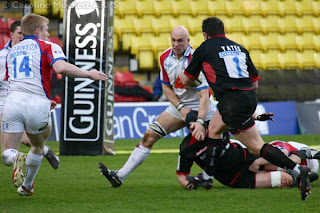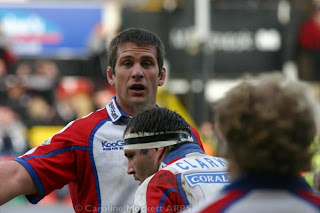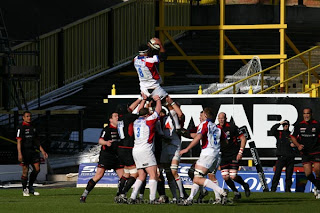I've already mentioned Depth of Field briefly, in my tutorial on Apertures and F-Numbers. But it's not just the aperture you are using which determines how much depth of field your pictures have.
Theory
Three factors influence the depth of field of an image. They are:
- Aperture of lens - the f-number you use at the time of taking the image
- Focal length of lens - eg, 28mm for a wide angle, 300mm for a telephoto.
- Distance to subject - how far you are from the main focus of the image.
smaller aperture = greater DoF than larger aperture
with the same focal length and distance to subject
wide angle lens = greater DoF than telephoto lens
with the same aperture and distance to subject
greater distance to subject = greater DoF than smaller distanceExamples
with the same focal length and aperture
The following show three pairs of pictures, each where two of the three parameters (aperture, focal length, distance to subject) have been kept constant, and the third is varied. Hopefully, this will demonstrate the effect of each. They were taken at a recent rugby match (not specifically for this tutorial, but they illustrate the points well). Whilst I will quote the shutter speeds and ISO setting used, they actually bare no relevence to the depth of field, so are just included for interest.
Changing The Aperture
Same focal length = 400mm
Similar subject distance = about half way across the pitch
 [small aperture - f/10, 1/800th @ ISO 400 - most of the image is in adequate focus, giving quite a busy appearance]
[small aperture - f/10, 1/800th @ ISO 400 - most of the image is in adequate focus, giving quite a busy appearance] [larger aperture - f/6.3, 1/400th @ ISO 400 - background is more blurred, giving better separation from the players]
[larger aperture - f/6.3, 1/400th @ ISO 400 - background is more blurred, giving better separation from the players]Changing The Focal Length
Same aperture = f/7.1
Similar subject distance = close to the nearest touchline
 [shorter focal length - 130mm, 1/250th @ ISO 400 - everything from touch judge on left (green) to furthest player is pretty sharp]
[shorter focal length - 130mm, 1/250th @ ISO 400 - everything from touch judge on left (green) to furthest player is pretty sharp] [longer focal length - 375mm, 1/400th @ ISO 400 - nearest player is blurred (he's about the same distance as the touch judge was in the above) and the background is also very soft]
[longer focal length - 375mm, 1/400th @ ISO 400 - nearest player is blurred (he's about the same distance as the touch judge was in the above) and the background is also very soft]Changing The Distance To Subject
Same aperture = f/5.6
Similar focal length = about 250mm
 [further away - far touchline, 1/4000th @ ISO 400 - most of the image is in sharp, including much of the background. The action was about 70m away]
[further away - far touchline, 1/4000th @ ISO 400 - most of the image is in sharp, including much of the background. The action was about 70m away] [closer distance - near touchline, 1/400th @ ISO 400 - background is more blurred, giving better separation. The action was about 10m away]
[closer distance - near touchline, 1/400th @ ISO 400 - background is more blurred, giving better separation. The action was about 10m away]Checking Depth of Field
Some cameras allow you to check the depth of field you will get before you take the picture. This is usually called Depth of Field Preview. Usually, when you look through the viewfinder, the camera is using the maximum aperture of the lens to show you the image. Pressing the DoF Preview button shuts the lens down to the size of aperture it will use at the time of taking - this often results in a darker view in the viewfinder (the lens is letting in less light) but you can visibly see just what will be sharp.
Maximizing Depth of Field
There is one special point in the image, which if you focus on it, will maximize the depth of field you get with any given combination of focal length of lens and aperture. This is known as the Hyperfocal Distance - and is approximately 1/3rd of the way into the picture, from where you are standing to infinity. There's another complicated formula telling you what will be sharp, but basically, if you set focus at the hyperfocal point, everything between half way to that point and infinity will be in focus. There is more sensible reading on the subject here.
As good practice, why not experiment with apertures, focal lengths and distance to subject, to see how you can go about controlling the depth of field in your pictures.

1 comment:
hi Caz, your blog is very interesting and helpful. Though I am a beginner in photography and really really interested in capture good photo, especially portrait photos with blur effect at the background. But I only have Canon ixus 850 IS at the moment. I've read your 2 tutorials about depth of field, but I still can not manage how I can do it with my canon. Aperture in that camera is confusing. Is it the same as exposure? if it was, the F-number is also confusing. Is there any chance if you can help me? will bu much appreciated. Thanks :)
Post a Comment